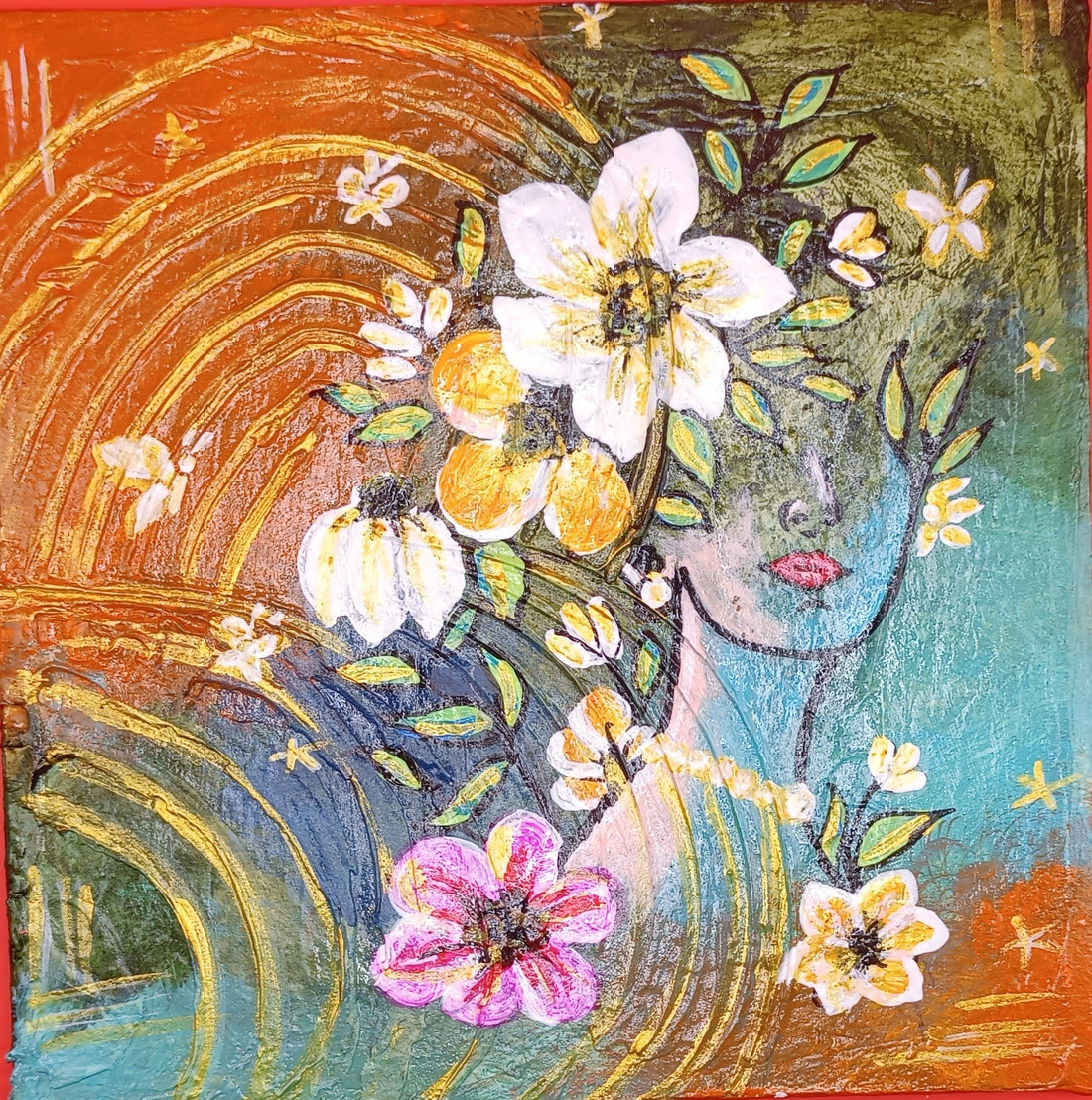
The Canvas Cure: Why Abstract Art Is the Therapy We Forgot to Prescribe
Share
In a world filled with deadlines, diagnoses, and dopamine-driven distractions, healing has become clinical—often stripped of soul, silence, and self-expression. But what if the remedy we've overlooked isn’t a pill or a protocol... but a painting?
Welcome to "The Canvas Cure"—a quiet revolution where abstract art becomes the therapy we forgot to prescribe.
When Words Fail, Colors Speak
Talk therapy has its place. So do medication and mindfulness apps. But some wounds live beyond language. Some emotions are too complex, too raw, or too buried to articulate.
That’s where abstract art enters—not to label, not to analyze, but to hold space.
A splash of deep blue can cradle sadness. A burst of crimson might scream the anger we suppress. A swirl of gold could remind us that light still exists, even when our minds feel dim.
Abstract art doesn’t tell you what to feel. It lets you feel *everything*—without judgement, without a timeline, and without rules. In that freedom, healing begins.
Why “Just Looking” Can Be Transformative
Scientific research confirms what ancient cultures always knew: art affects the nervous system. Just viewing art can reduce cortisol (the stress hormone), slow heart rate, and activate brain regions associated with pleasure and self-reflection.
But abstract art does something more. It doesn't bind us to stories or images we recognize. It invites "interpretation". And that invitation becomes a personal journey—your brain fills in the blanks with your own emotions, memories, and needs.
This is why no two people see the same thing in an abstract painting. It’s not just art. It’s a "mirror".
The Invisible Prescription: Art in Everyday Spaces
Walk into most hospitals, hotels, or homes, and what do you see? Sterile walls. Repeated patterns. Décor without soul.
Now imagine instead: A waiting room where anxious patients sit beside a calming abstract mural in ocean tones. A hotel lobby where vibrant, fluid art stirs curiosity and wonder. A bedroom where soft, layered textures in a painting quietly whisper, *you’re safe here*.
That’s the power of intentional art curation. It becomes part of the emotional architecture of a space. It doesn’t shout. It soothes.
My Journey: When Art Healed What Therapy Couldn’t
Before I was an artist, I was simply a woman trying to survive life’s storms—heartbreaks, societal pressures, anxiety buried under a smile. Traditional tools helped… to a point. But true healing began when I picked up a brush with no agenda.
I didn’t set out to create a masterpiece. I just needed to release.
And what spilled out was me. Unfiltered. Raw. Real.
From that place of vulnerability came "Abstract Art Alchemist"—a book not just about paintings, but about transformation. About how art can transmute pain into power, confusion into clarity, and scars into stories.
Why We Need the Canvas Cure Now More Than Ever
We’re in the midst of a global wellness crisis. Anxiety is soaring. Loneliness is epidemic. Burnout is normalised.
We don’t just need more therapists. We need more "tools". Tools that are accessible. Gentle. Creative.
Abstract art is that tool. It belongs in therapy rooms—but also in living rooms, hotel corridors, wellness retreats, and digital galleries. Anywhere people seek to feel again.
Because healing isn’t just about “getting better”.
It’s about "becoming whole".
Final Brushstroke
The next time you pass a piece of abstract art, pause. Don’t just look. "Feel."
And if something stirs inside you—whether peace, discomfort, nostalgia, or hope—know that the painting is doing its job.
This is the Canvas Cure.
Unprescribed. Underestimated.
Unbelievably powerful.
